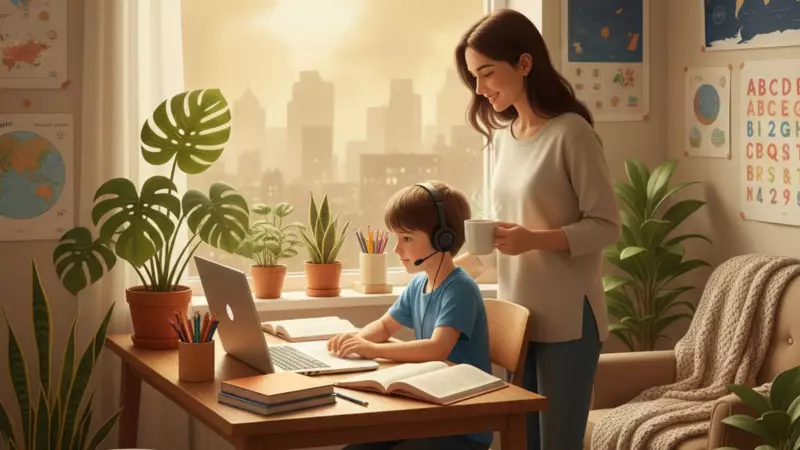
In response to the dangerously deteriorating air quality in the national capital, the Delhi government has issued a directive for schools to adopt a hybrid mode of instruction for students up to Class 5. This significant move, announced on November 11, 2025, provides parents with the flexibility to opt for online learning to shield their children from the toxic smog enveloping the city.
The decision comes on the heels of the Central government enforcing Stage III restrictions of the Graded Response Action Plan (GRAP) across Delhi-NCR. This action was triggered by a sharp and alarming rise in pollution levels, creating a public health emergency. For parents, this situation presents a dual challenge: safeguarding their children's physical health from the polluted air while ensuring their educational progress does not suffer.
Transforming Home into a Dynamic Classroom
Neelima Kamrah, Principal of KIIT World School in Gurugram, emphasizes that with strategic planning and a strong partnership between parents and schools, children can remain safe, intellectually engaged, and positive. The key lies in converting this environmental challenge into an opportunity for resilient learning.
Creating a Conducive Learning Environment
Establishing a dedicated study space is the first step toward successful online education. A quiet, well-lit corner designated solely for learning can dramatically improve a child's concentration. Equip this area with all necessary supplies—books, stationery, and a water bottle—to minimize distractions. A clean desk, good ventilation, and even a small indoor plant can help create a calm and inviting atmosphere conducive to study.
With multiple family members often competing for limited devices, managing screen time becomes crucial. Creating a clear schedule that outlines who uses which device and when can prevent conflicts. Parents are encouraged to communicate with schools, which are typically willing to provide recorded lessons or offline worksheets. For optimal resource use, smartphones can be utilized for lighter tasks like quizzes, reserving laptops or tablets for more intensive live sessions.
Maintaining Health and Well-being Indoors
When outdoor play is not an option, maintaining a consistent daily routine provides essential structure and stability for children. Sticking to regular wake-up times, meal schedules, and interspersing study blocks with short breaks is vital. Incorporating screen-free activities such as drawing, puzzles, or listening to music can break the monotony and keep young minds active.
Physical health cannot be overlooked. Since outdoor exercise is restricted, finding ways to move indoors is important. A fun dance session, simple yoga stretches, or just walking around the house can help. Nutrition also plays a key role; offering hydrating drinks and healthy snacks like fruits, nuts, or warm turmeric milk can boost immunity. It is equally important to watch for signs of stress or fatigue and address them with calming conversations, cuddles, or deep-breathing exercises.
Ensuring Clean Air and Seamless Tech
Protecting children from poor air quality requires diligent indoor air management. During peak pollution hours, keep windows closed and ventilate rooms briefly when air quality is relatively better, often around noon. Regular dusting with a wet cloth and mopping floors can significantly reduce indoor particulate matter. If available, an air purifier should be run continuously in the child's study or bedroom. When venturing outside is unavoidable, ensure children wear N95 masks, especially those with pre-existing conditions like asthma.
On the technology front, a few proactive steps can prevent mid-class frustrations. Ensure all devices and required applications are updated, passwords are saved correctly, and the internet connection is stable. Teaching children simple troubleshooting steps, such as refreshing a webpage or reconnecting to Wi-Fi, can foster independence and problem-solving skills.
Ultimately, success in this hybrid learning model hinges on effective communication between parents and schools. Staying updated on school announcements and promptly informing teachers about any technical glitches or health concerns allows for a more responsive and supportive educational experience. With a proactive approach, creativity, and collaboration, families can effectively transform their homes into vibrant and effective learning spaces, ensuring children continue to thrive despite the external challenges.





